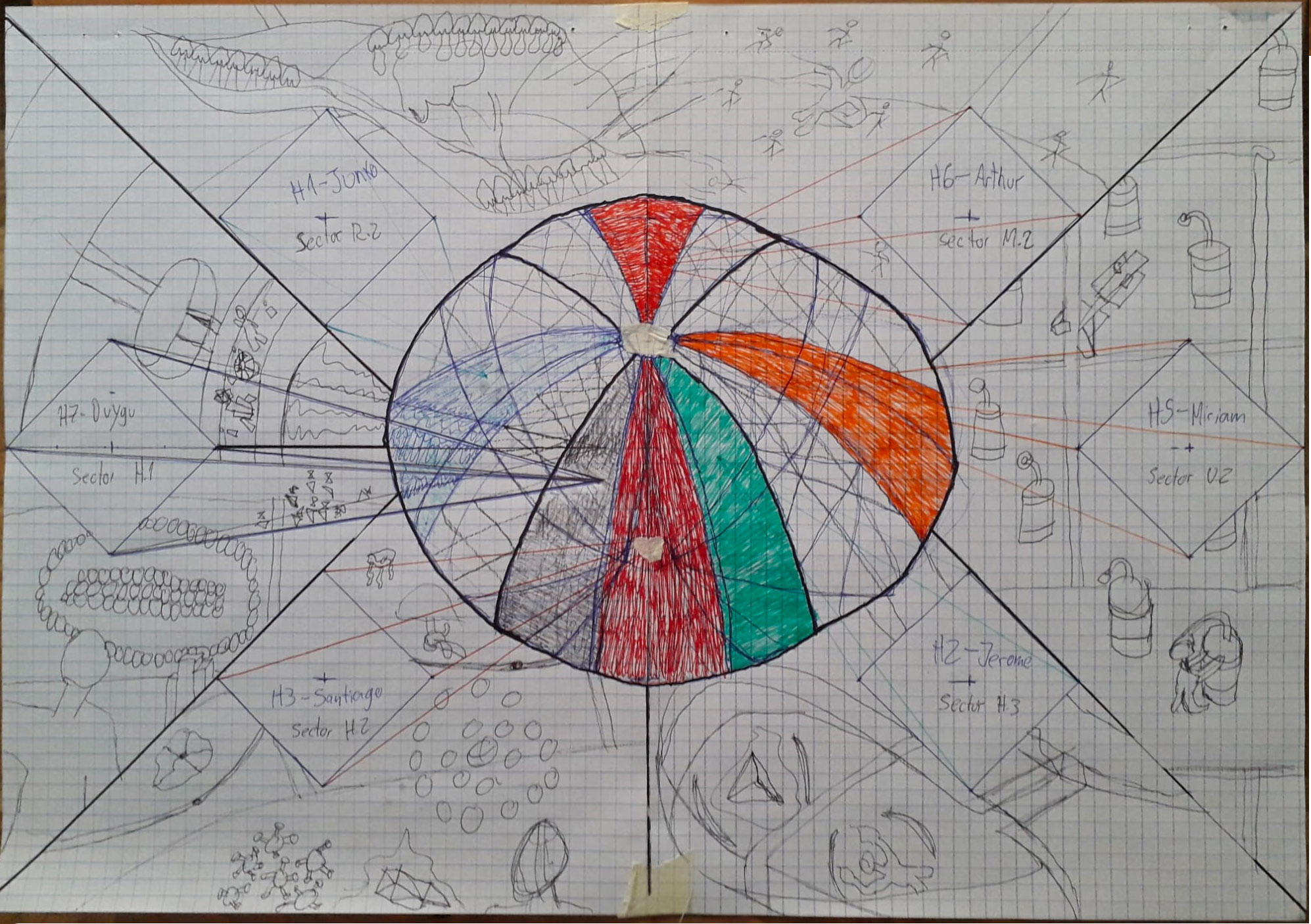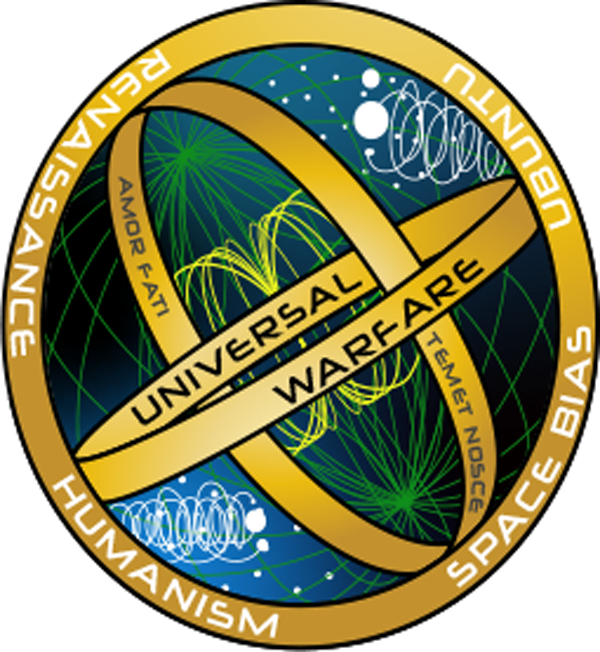About the Series
This story doesn’t follow the usual blueprint.
From the way alien species are imagined—how they look, communicate, and perceive reality—to the way we explore time dilation and the long-term effects of deep space travel, the world of Universal Warfare was built to challenge familiar tropes.
What also sets it apart is its attention to mental health, a core part of the story, not just a background theme.
How it all began

At the heart of Universal Warfare is a simple but powerful idea:
Like the Renaissance thinkers who used ancient wisdom to challenge their present, we believe our young species still has much to learn about ourselves, our emotions, and our place in the universe. This story is a call for introspection, a nudge toward emotional intelligence as a path forward.
We don’t shy away from complexity, but we aim to make it feel effortless. Our hope is to draw readers in with beauty, imagination, and emotional truth—creating a chain that starts with curiosity, passes through love, and leads to insight.
More than anything, this is an honest attempt to raise mental health awareness, and to invite reflection on the world we live in now. We don’t offer easy answers—we ask meaningful questions, and trust the reader to explore them.
The story unfolds through seven main protagonists, each with their own chapter, from 2 to 8.
Two develop in the present tense, while the others develop in the past. That choice, like much in Universal Warfare, is deliberate. The structure itself reflects the fragmentation and perspective-shifting that define our times, as well as the limitations each character faces throughout their journey.
The characters come from a wide range of backgrounds:
– A woman born to a Japanese father and Taiwanese mother
– A survivor of the Rwandan genocide
– A Colombian with Lebanese and Portuguese roots
– A Danish man whose mother was born in Germany
– A married Jewish woman from Jerusalem
– A writer of Anglo-Indian origins
– And a Turkish Muslim woman working as a programmer
Each voice brings something different—cultural context, lived trauma, emotional resilience, and philosophical depth. Their stories are deeply personal, but interwoven with themes that affect us all: identity, conflict, love, loss, and the search for meaning in a fractured world.
One of the first voices you meet, though, is not human at all—an AI who begins by judging humanity harshly.
The universe of Universal Warfare spans over 7 trillion light-years—roughly 78 times the size of our observable universe, and 252 times the size of a Hubble Sphere.
This vast scale gives us the freedom to imagine countless civilizations—some dystopian, as cautionary tales in the spirit of 1984, Brave New World, or Fahrenheit 451; others utopian, shaped by Artificial Emotional Intelligence (A.E.I.), reimagined systems of education, and cultural frameworks that promote emotional growth. At the core of both extremes lies a shared intent: to reflect our present and pose questions about our future.
We believe in the value of unattainable ideals—like Nietzsche’s Übermensch, or the moral aspirations found in many religions—not as goals to reach, but as guiding stars. They remind us to stay humble, to judge others with compassion, to consider Fortuna (luck) before casting blame, and to meet even life’s tragedies with a sense of humor—as the Greeks taught us. That spirit lives in the story, and we hope you’ll feel it in the message.
Though the novel deals with serious themes, we’ve done our best not to take ourselves too seriously.
Each of the first episode’s chapters features a distinct illustration, beginning with one in the style of a graphic novel. As the story progresses, the visual style will evolve, drawing inspiration from some of our favorite artists: Dalí, Panini, Hieronymus Bosch, Escher, and more. In the next episodes, we expect to perhaps mirror the multi-perspective composition of Da Vinci’s The Last Supper—a playful nod to the somewhat audacious attempt of this story to deliver meaningful ideas through beauty.
If we’re lucky, maybe these influences will help spark the same sense of reflection, virtue, or purpose that religion once gave so many.

For example, you’ll find a spreadsheet that maps out literary structures and MBTI classifications for every character in the story, including detailed breakdowns of the main seven protagonists. It even highlights the key mental health challenges each one has faced in their lives.
One of them is a writer who used to play a game with friends on Earth called What story could this be? In it, they would imagine a situation and reverse-engineer the plot, structure, and writer behind it. During his chapter—and in his interactions with others—Archan becomes the novel’s internal critic, questioning the motives behind such a long narrative: the author’s vanity, insecurities, Freudian subtext, Jungian archetypes… you get the idea.
The file also includes time dilation calculators and alternative interpretations of time across different planetary systems.
What does a light-year mean on a planet where a day isn’t 24 hours, a year isn’t 365.25 days, or a minute doesn’t have 60 seconds?
Using any values that made sense for each fictional society, this tool models how time might be understood when shaped by different celestial mechanics. It explores how orbits, rotations, and perception affect our concept of a year—how fast time is felt, and how differently it might pass when seen from another world that also experiences a different time frequency.
In addition to the spreadsheets we mentioned, the Miro board contains animations, concept art, and speculative urban designs inspired by initiatives like The Venus Project and the philosophy of The School of Life.
Many of these elements are presented as if created by the characters themselves, making them part of an in-universe, interactive experience.
One of these is part of the schematics for a city-station.
One of our long-term goals is to introduce a mental health platform from the story’s universe, called PandaA—Peace and Awareness Assistant App.
Still in the early stages of development, it’s similar in concept to A.E.I. (Artificial Emotional Intelligence). The app is imagined as a tool that not only provides emotional support but also evaluates the mental health impact of everyday digital tools—from social networks to news platforms.
It would allow users to take tests that assess mental wellness and detect possible psychiatric conditions, while also offering affordable support and financial aid, so access to care isn’t limited by cost.
In the real world, a weekly session with a therapist can easily cost €150–€300. Most people simply can’t afford that. We’re still evolving as a species, but we believe that access to mental health tools and awareness should be available to everyone, everywhere.
Even if just fiction for now, this is our small attempt to imagine a future where that’s possible.

